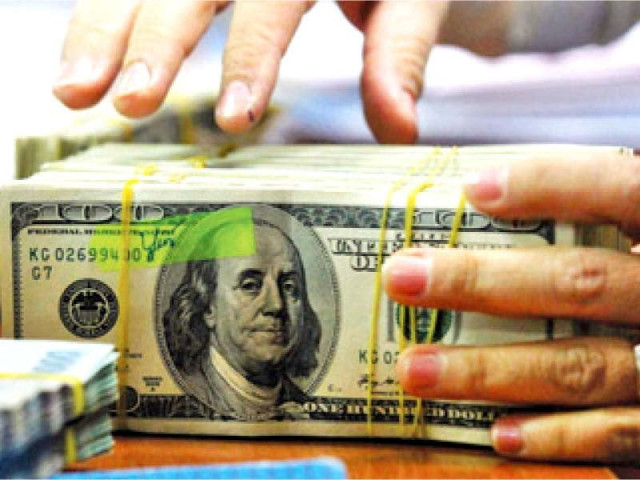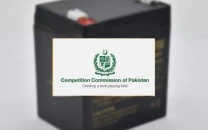Debt servicing surges to Rs2.1tr
Eats up 82% of govt revenues, prompting steep cut in development budget

The cost of debt servicing jumped to Rs2.1 trillion in just nine months that consumed 82% of government’s net revenues, resulting in a steep cut in development budget and containing defence spending.
The money left after paying for interest cost was hardly sufficient to meet 60% of nine-month defence expenditures, reveals the fiscal operations summary for July-March of 2020-21.
The remaining defence and other expenses for running the affairs of the government were met by taking new loans, the finance ministry report, released on Thursday, showed.
“The finance ministry numbers are always different from the planning ministry numbers but this year during the first nine months the spending is lower,” said Planning Minister Asad Umar. He said that the full-year spending was still expected to be Rs650 billion.
Read: External debt servicing to stay above $10b next fiscal
The failure to enhance revenues and the central bank’s decision to fix interest rate at 13.25% in the last fiscal year despite core inflation at around 6% has led to a massive increase in the government’s debt servicing cost.
Finance Minister Shaukat Tarin also said on Wednesday that the central bank went overboard when it kept the interest rate at 13.25% when core inflation was around 5-6%.
There was 22.5% drop in the federal development spending, which amounted to a mere Rs264 billion during the first three quarters of current fiscal year.
Development spending was equal to only 40% of the annual Public Sector Development Programme (PSDP) of Rs650 billion. The federal development spending was also Rs255 billion less than the annual spending plan approved by the Ministry of Finance.
Also, defence spending remained Rs18 billion or 2.2% less than the last fiscal year and stood at Rs784 billion.
Interest payments grew nearly 12% to Rs2.1 trillion - the highest increase under any head of the budget during the July-March period.
Combined expenditures on debt and defence stood at Rs2.9 trillion, which was Rs312 billion more than the net income of the federal government despite a decent growth in revenues.
The constant high bill of debt and defence once again highlights that the Pakistan Tehreek-e-Insaf (PTI) government still lacks fiscal space for stimulating the economy and spending on human development. Finance Minister Tarin’s plan to achieve higher economic growth in the next fiscal year through public sector spending may face many fiscal challenges.
The cumulative spending of Rs2.9 trillion on debt servicing and defence needs was equal to 85% of total taxes collected by the Federal Board of Revenue (FBR) in the nine-month period. The FBR pooled Rs3.4 trillion during the period.
Net federal receipts are calculated after excluding the share of four provinces from the gross federal receipts. Gross federal receipts stood at Rs4.6 trillion, which increased by 5.1% over the same period of previous year.
The share of provinces in federal collection slightly increased by 2.8% to Rs2 trillion despite an increase in tax collection by the FBR. The four provinces get 57.5% of federal taxes as their share under the National Finance Commission (NFC) Award.
The overall budget deficit widened to 3.6% of gross domestic product (GDP), or Rs1.65 trillion, in the first nine months.
However, the government has showed a huge statistical discrepancy of Rs167 billion in expenditures. After adjusting this discrepancy, the overall budget deficit would shoot up to 4% of GDP or Rs1.8 trillion, up 7% than the last fiscal year.
A finance ministry official said that the Rs164-billion discrepancy was in the provincial fiscal operations and the numbers were being reconciled.
Alarmingly, the interest payments were equal to 4.6% of GDP, which was higher than both the federal and overall budget deficit in the nine-month period.
The federal budget deficit in the first nine months stood at Rs2.06 trillion, which was equal to 4.5% of GDP.
Former finance minister Dr Abdul Hafeez Shaikh had claimed to have achieved fiscal discipline despite booking over Rs3 trillion in budget deficit every year.
Revenues are falling short of the needs even though the government is heavily burdening the people with taxes on fuel, electricity and consumer goods.
Read more: Pakistan to seek debt restructuring of CPEC power projects
The petroleum levy collection stood at Rs369 billion, up 86% or Rs171 billion, in just nine months.
Non-tax revenue collection increased to Rs1.2 trillion, showing 13% growth in the period under review. The central bank’s profit dropped to Rs498 billion, a reduction of 22% in nine months against earnings of Rs636 billion in the same period of last year due to the overall reduction in interest rate.
After paying Rs2 trillion to provinces, the net federal revenues amounted to Rs2.6 trillion, which was better than the first nine months of previous fiscal year.
Total federal expenditures stood at Rs4.63 trillion, which were higher by Rs201 billion or 5% over the same period of last fiscal year. There was an increase of 7% in current expenditures in nine months, which stood at Rs4.2 trillion.
Published in The Express Tribune, May 7th, 2021.
Like Business on Facebook, follow @TribuneBiz on Twitter to stay informed and join in the conversation.



















COMMENTS
Comments are moderated and generally will be posted if they are on-topic and not abusive.
For more information, please see our Comments FAQ